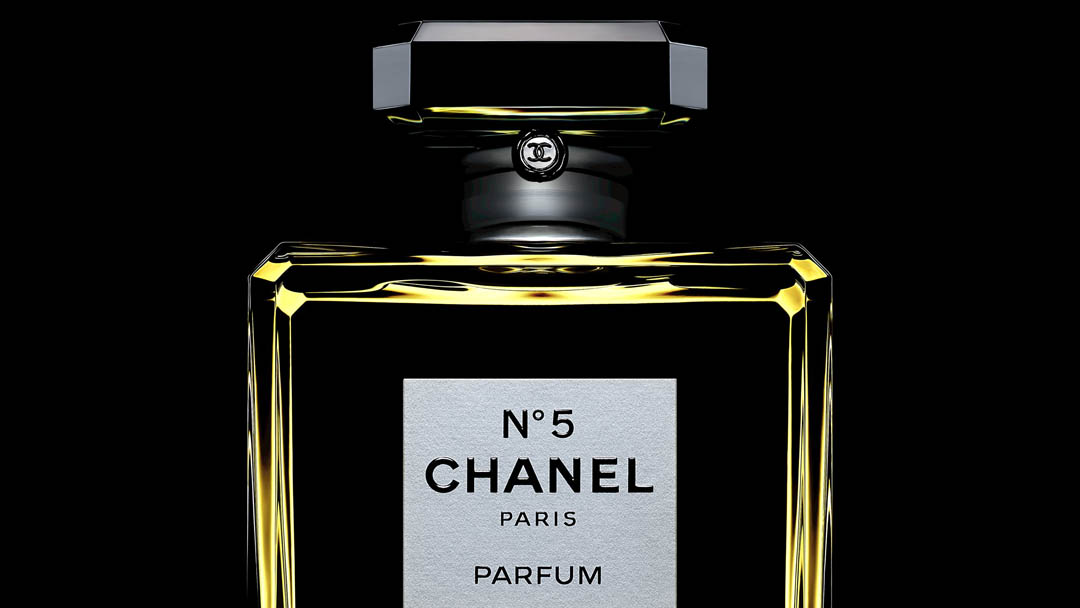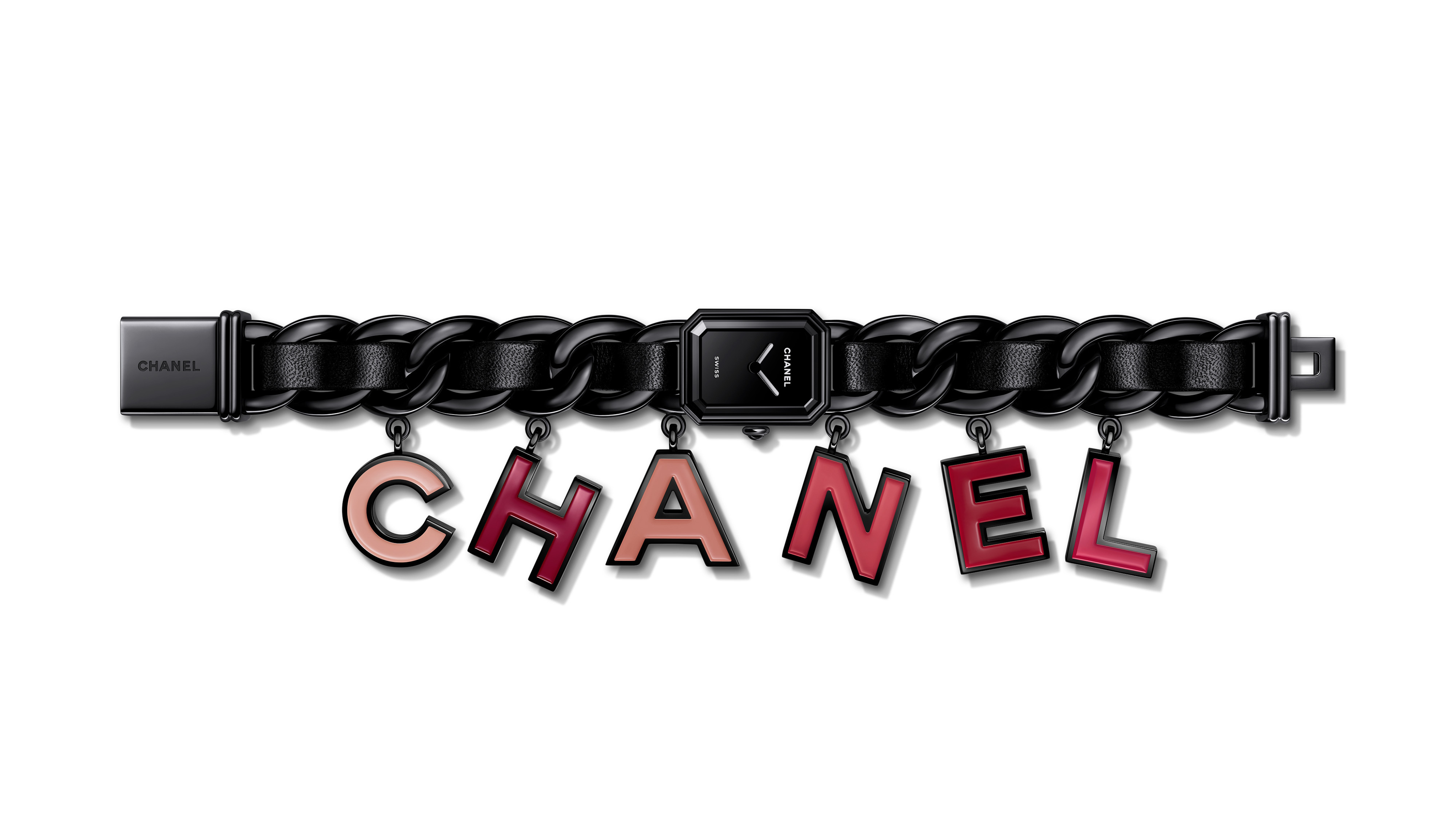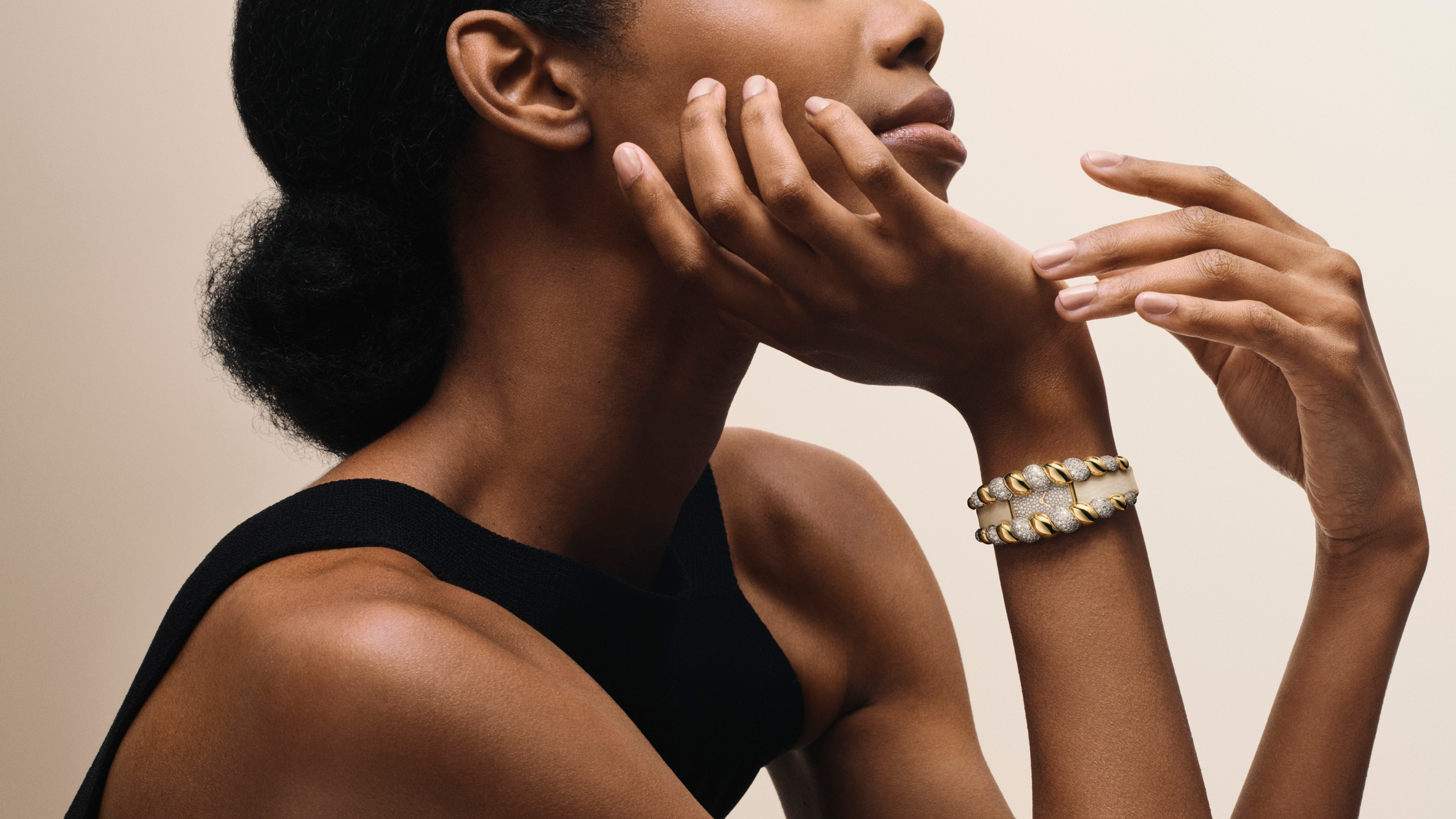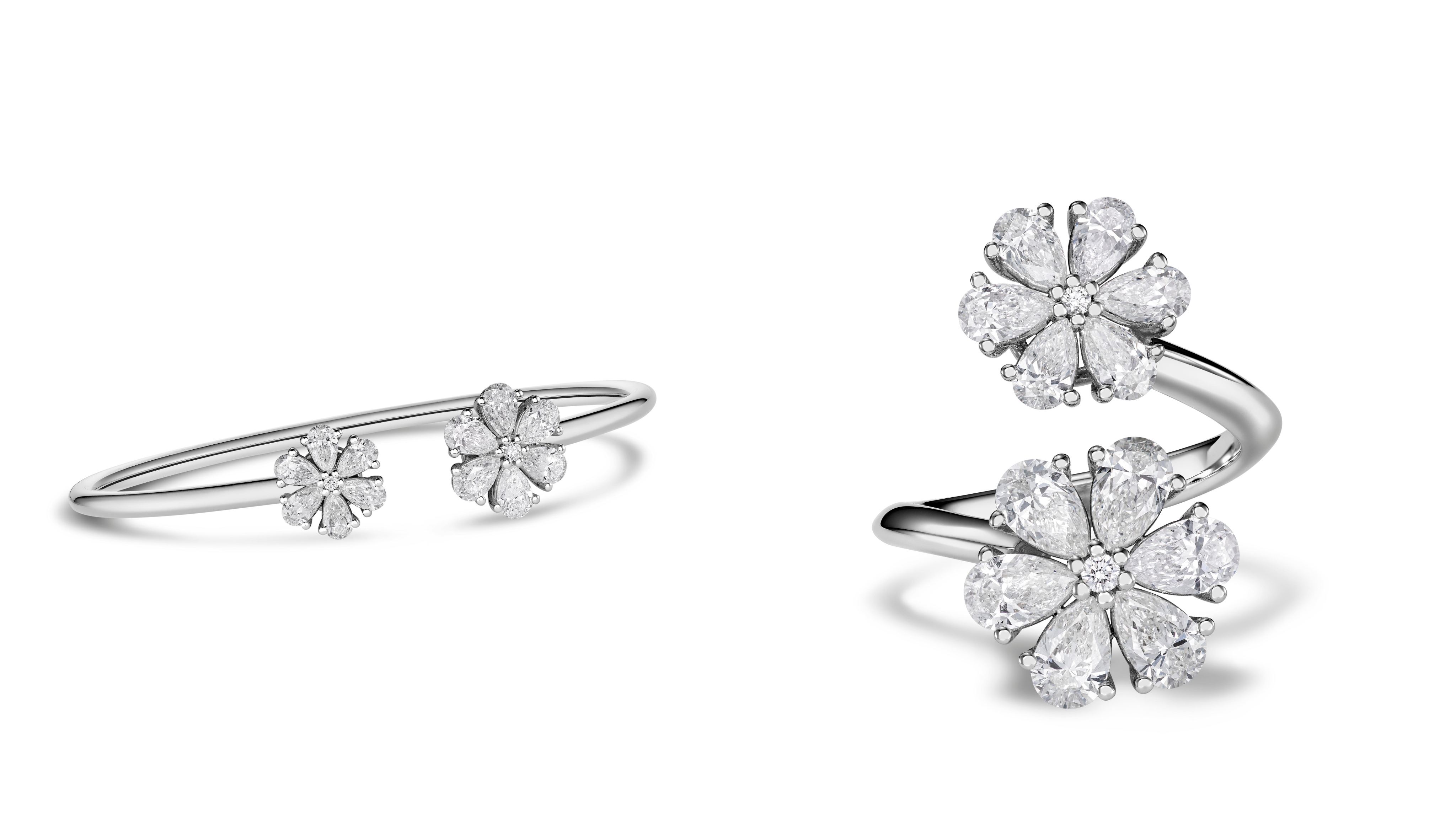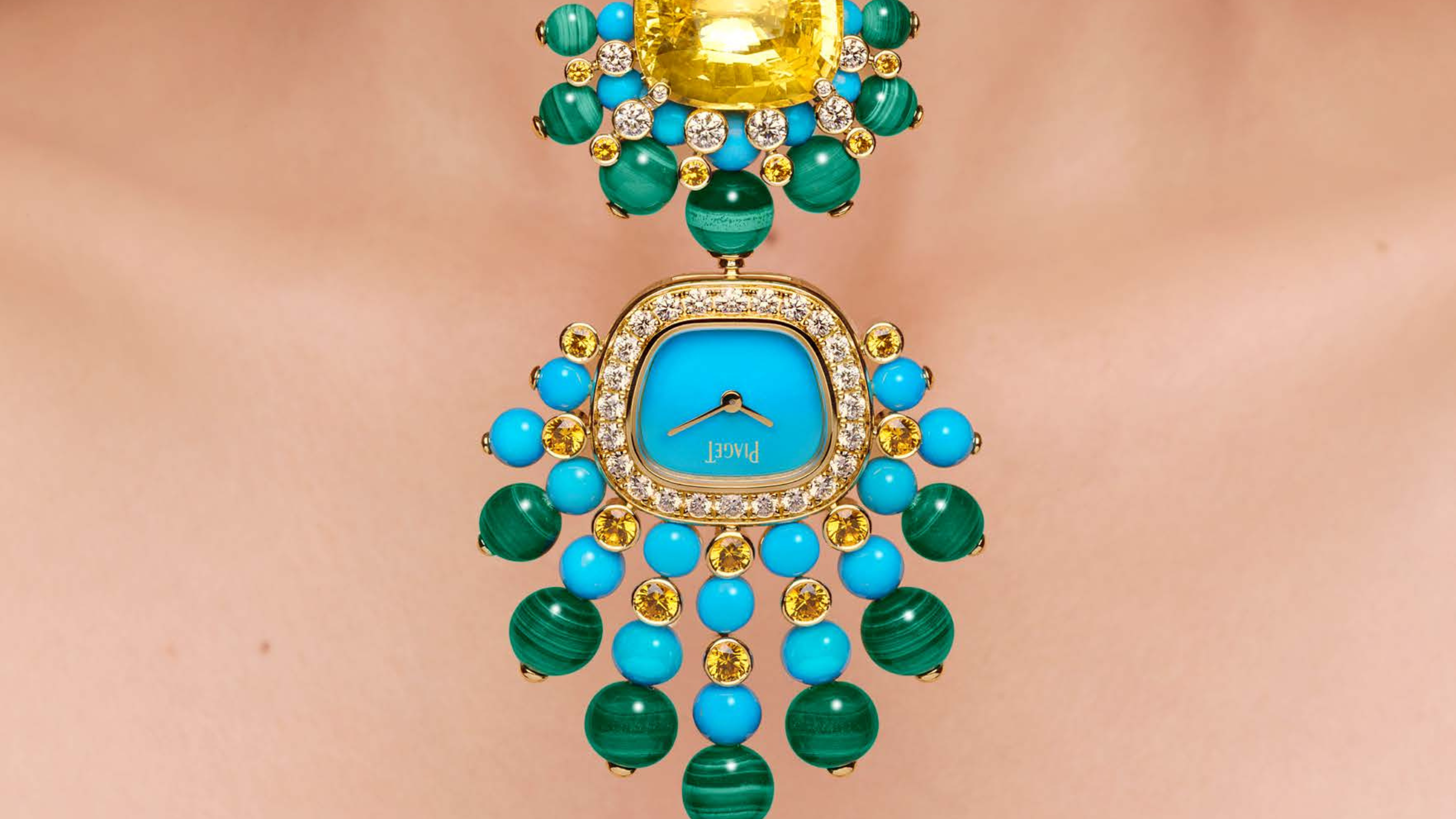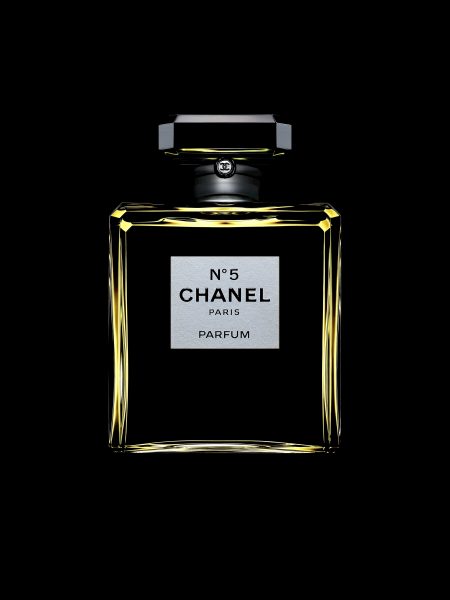
In 1921, N°5 came into the world. It was the first fragrance created by visionary fashion designer Gabrielle Chanel, who was also the first designer to launch a fragrance under her own name. Her intention was to liberate femininity from its olfactory constraints in the same way that she used her creations to free minds and assert a new style. During this era, the fragrances on the market generally limited women to the scent of a single flower, such as lily of the valley, violet, or jasmine. Breaking with the traditions of its time, the abstract scent trail of N°5 is a reflection of Gabrielle Chanel’s personality. Her mirror image, in fragrance form.
With N°5, Ernest Beaux designed an avant-garde composition, combining the finest natural ingredients with synthetic molecules called aldehydes, which were still new at the time, in unprecedented proportions to exalt the notes of the fragrance. N°5 eludes comparison to other fragrances and does not conform to any rules. Thanks to its radical character, it became the tipping point that ushered in the modern era of perfume and changed its history. N°5 is a pioneering fragrance, a revolution.
———————–
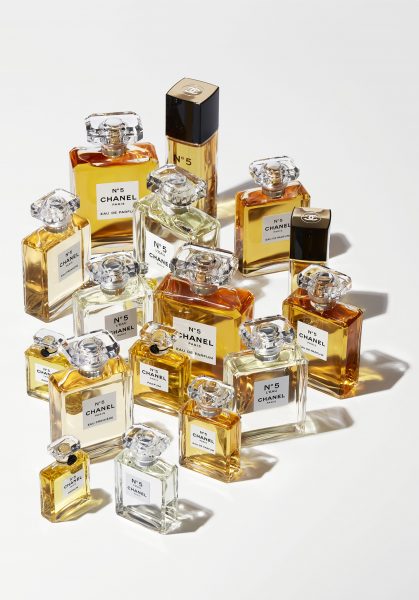
5 INTERPRETATIONS
Since its creation in 1921, N°5 has been a manifesto that declares the absolute freedom of both creator and creation, which remains the driving force and the soul of the House.
N°5 is thus an endless source of inspiration. With the exception of Henri Robert, the House’s successive perfumers have each brought one of the numerous facets of N°5 to light through various reinterpretations, an exercise in style. Today, there exist five different interpretations, including the original Parfum.
N°5 PARFUM (1921)
Composed in 1921, the Parfum is the most precious of the interpretations. “The starting point was a very rich floral fragrance, which was completely novel at the time,” Olivier Polge shares. Knowing that Gabrielle Chanel wanted her fragrance to be “inimitable”, perfumer Ernest Beaux incorporated the most luxurious ingredients at his disposal into the formula: flowers grown in Grasse. Its composition, of the utmost opulence, contrasts radically with the minimalist design of the bottle. The powerful scent trail of N°5 Parfum represented a clean break from the single-note fragrances that were prevalent during this era: its intense floral bouquet contains a particular blend of May rose and jasmine from Grasse. Its formula, which is also characterized by the unprecedented use of aldehydes, propelled perfumery into the modern era. As CHANEL’s début fragrance, N°5 Parfum defined the House’s olfactive style and set the standard for its tradition of excellence and expertise in perfumery, from flower to bottle.
N°5 EAU DE TOILETTE (1924)
Three years after composing the Parfum, Ernest Beaux created the first variation of N°5. “The highly precious nature of the Parfum quickly justified the need for a lighter eau de toilette version that stayed true to the spirit of the original,” explains Olivier Polge. Woodier than the original fragrance, the eau de toilette is distinguished by its dry, lively nuances of vetiver, which are offset by the deep scent of sandalwood. These two woody notes support the floral bouquet of jasmine, rose and ylang-ylang and are enhanced by the notorious aldehydes that are unique to N°5. The Eau de Toilette also leaves behind a scent trail that is less heady than that of the Parfum. As the first reinterpretation of the original fragrance composition, it introduced a new way to experience fragrance, in a spray that allowed for a generous, wide-sweeping application.
N°5 EAU DE PARFUM (1986)
Observing how fragrance trends were evolving, Jacques Polge created a third interpretation of N°5 in 1986. The Eau de Parfum offered a new concentration that revived the sensuality of Ernest Beaux’s original fragrance while also keeping up with the times. “His intention was to preserve as much of the Parfum’s richness as possible, both from an olfactory perspective and in terms of the fragrance’s amber color,” explains Olivier Polge. In this composition, the floral-aldehydic bouquet is lavish and opulent, with a rich quality that extends to its dense, enveloping and long-lasting scent trail. A note of vanilla lends the fragrance its distinct oriental signature.
N°5 EAU PREMIÈRE (2008)
In 2008, Jacques Polge released a fourth version of N°5, one that was airy and luminous. The perfumer tried to imagine how N°5 would have smelled if Ernest Beaux had had access to a range of contemporary raw materials at the time of its creation. To reinterpret the signature of the original fragrance, he used white musks, which were omnipresent in the fragrances of the 2000s, as well as aldehydes developed by CHANEL from citrus essences. Products of modern technology, these aldehydes envelop the iconic floral bouquet of rose, jasmine and ylang-ylang. Enlivened with a touch of vanilla, “the scent trail of the Eau Première reveals another texture, closer to the skin, that remains very similar to N°5,” Olivier Polge reflects.
N°5 L’EAU (2016)
In 2016, Olivier Polge created a new variation, guided by a desire for freshness. “I wanted to play with the limits of its identity,” the perfumer reveals. “Take the image that N°5 conveys and turn it on its head, make it more fluid. More transparent, in the best sense of the word.” To this end, he based his composition around cedarwood, which underscores a textured scent trail that is less enveloping than the other interpretations. A fresh, floral eau de toilette, N°5 L’EAU opens with a citrus accord — lemon, mandarin and orange — that the aldehydes elevate to its highest potential. Rose and jasmine meld with a new, fractionated note of ylang-ylang. N°5 L’EAU is perhaps the variation that differs most from the others. However, the notes used by Olivier Polge are the same. This illustrates the idea that in perfumery, everything is a matter of proportion, just as every melody ever created was formed from a mere 12 musical notes.
——————-
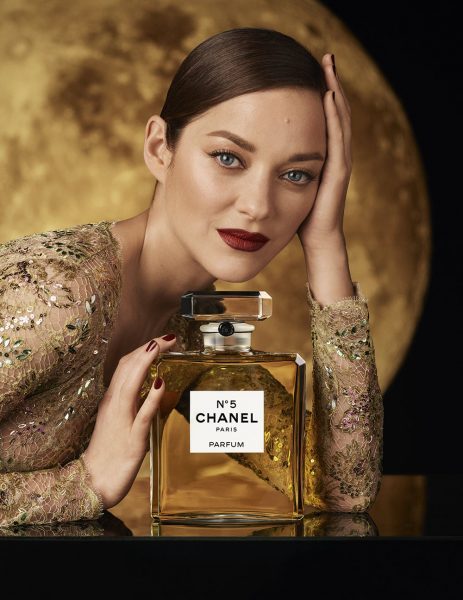
AN ICON OF FEMININITY
Throughout the decades, N°5 has been represented by some of the greatest actresses of their time, including Ali MacGraw, Lauren Hutton, Catherine Deneuve, Carole Bouquet and Nicole Kidman. One by one, they posed for famous photographers such as Richard Avedon, Patrick Demarchelier, and Dominique Issermann, and filmed under the guidance of renowned directors like Helmut Newton, Ridley Scott and Baz Luhrmann.
——————–
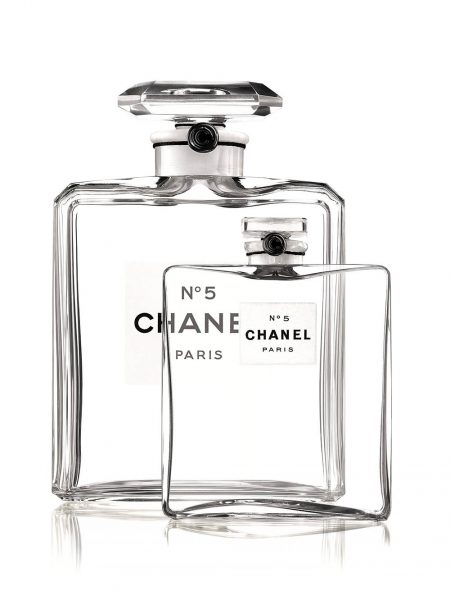
THE LUXURY OF SIMPLICITY
Chanel designed a minimalist bottle that allowed the amber color of the fragrance to take center stage. The flat shape, similar to that of a hip flask, was designed for movement and speed, for a pocket or travel kit. For the first time, the stopper featured the interlocking double C logo. The label’s radical simplicity was consistent with the spirit of the times.
Gabrielle Chanel said, “Always remove, never add”. Throughout the decades, the understated, elegant design of N°5 has remained mostly unchanged.
The three fundamentals of N°5 — its revolutionary scent, the excellence of its raw materials, and its radical packaging — are to CHANEL what grammar is to language, determining the style of all other CHANEL fragrances.
#CHANELFragrance
#N5
#100YEARSOFCELEBRITY
@CHANELOFFICIAL
CHANEL chanel fragrance CHANEL N°5 gabrielle chanel MARION COTILLARD minimalist design NICOLE KIDMAN
